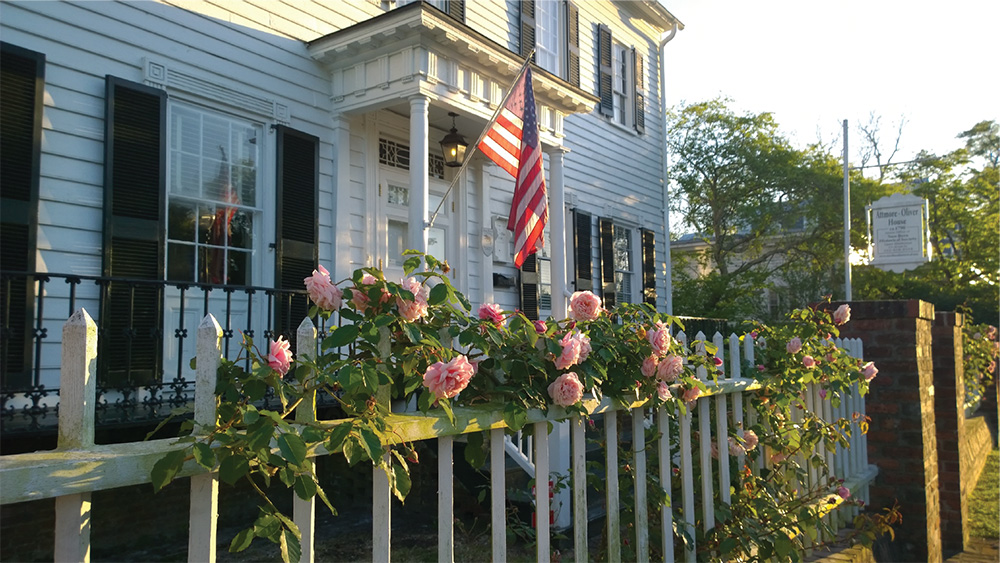On March 14, 1862, the Battle of New Bern was fought. The Battle was the second of three major engagements in an expedition led by Union Gen. Ambrose Burnside. The first was the capture of Roanoke Island in early February. The next Union objective was to capture New Bern due to its strategic location. The Atlantic and North Carolina railroad passed through this town to link up with other railroads transporting men and provisions vital to the Confederate war effort in Virginia. Union strategists anticipated using New Bern as a launch point for Union Troops to sever the main Confederate north-south railroad supply line at Goldsboro.
Burnside’s fleet sailed on March 11, stopping at Hatteras where they were joined by an additional 13 gunboats, amassing a combined force of almost 12,000 men. On March 12, the fleet entered the Neuse River, and on March 13, the fleet sailed up the Neuse River and landed infantry to make a joint amphibious assault at Slocum’s Creek. Awaiting the Union forces were approximately 4,500 inexperience and ill-equipped Confederate troops commanded by Brig. Gen. Lawrence O’Bryan Branch, a politician with no military experience. Branch had six infantry regiments, one dismounted cavalry regiment, a two week old militia unit and three gun batteries to defend a line of 2.5 miles. It was a baptism of fire for all the NC troops. Weather conditions were poor-thick fog, unseasonably cold temperatures and intermittent heavy rains. Burnside sent in three brigades commanded by Brig. Gen. Jesse Reno, Brig. Gen. John Parke and Brig. Gen. John Foster, while Union Commander Stephen Rowan advanced his gunboats and shelled the shoreline.
During the morning of March 14 the three Union brigades attacked along the railroad and the battle raged for nearly 6 hours. Union troops were eventually able to flank the militia battalion in the vicinity of Wood’s brickyard adjacent to the railroad. These poorly armed, inexperienced militiamen were driven from their position leaving exposed and vulnerable the right flank of the 35th NC Regiment. The Union units pushed through forcing a general Confederate retreat. The Union captured nine forts and 41 heavy guns and occupied the city until the end of the war despite several Confederate efforts to retake the town. Although Union forces never seized and held the railroad line at Goldsboro, their presence in New Bern required the Confederate government to divert troops to the railroad’s defenses that might otherwise have been employed in the fighting in Virginia.
Due in part to the Union victory at New Bern, General Burnside was selected by President Lincoln as the next commander of the Army of the Potomac. Colonel Zebulon Vance, who commanded the 26th North Carolina Regiment, would later become the war time governor of North Carolina. In July, 1863, the 26th North Carolina at the battle of Gettysburg would lose 588 of 800 men-sustaining the largest numerical losses of any unit, North or South, during the entire war.
Other related resources:
• Images of the Civil War from the State Archives
• The Civil War on NCpedia
• The North Civil War Experience from N.C. Historic Sites
• North Carolina and the Civil War from the N.C. Museum of History
• The North Carolina Civil War Sesquicentennial Committee
• North Carolina as a Civil War Battleground from N.C. Historical Publications
• The Outer Banks History Center


